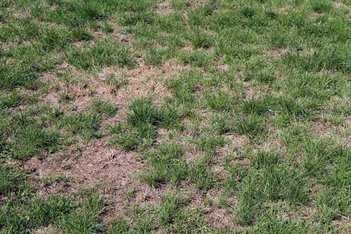Pasture recovery plan: setting up next spring.
Rain in the past few weeks has helped alleviate dry conditions for many farmers throughout the country. With some soil moisture available, it’s now critical to strike the right balance between feeding animals, and maximising pasture and crop growth. This will make a big difference to how fast you get production back on track for spring.
Introduction
The goal of recovering from the dry is to be in the right place at the start of your next lambing and/or calving, namely with your stock in the desired condition, and with enough feed available. Lessons from previous droughts have shown it is better to take the hit now than to let the effects of this dry season flow into 2015/16.
Pasture renewal
Hopefully your autumn pasture renewal plan is well underway. Three things need to be considered at this stage of the recovery process.
- Thin pasture – now that rain has arrived, you will be able to see if pastures that you believed would recover will, or not. The picture below is an example of a pasture which has recovered with a lot of bare ground.

A thin pasture presents a race between you and the weeds as to which will fill the bare areas first.
Undersowing (i.e. drilling seed in without a herbicide spray) can be a simple way to thicken pastures.
- Control weeds – they’re competing for resources, and are typically worse than normal in dry seasons. Spray when they’re small as they’re easier to control.
- First nip off for newly sown pasture – the first light grazing increases pasture growth rate, and should be done when plants don’t pull out. This is a management tool, not a full grazing for animals.
Surviving paddocks
It’s important not to graze your surviving pastures too soon. For 3-4 weeks after rain the general rule is to do nothing different, i.e. continue holding stock back and build up pasture cover. Remember ‘grass grows grass.’
Wait until ryegrass tillers have three leaves before grazing any new growth post-rain. At this stage, the plants have replenished their reserves so they will regrow strongly (see diagram). As a general rule:
- 1st leaf is around 15% of total growth;
- 2nd leaf is around 35%;
- 3rd leaf is around 50%.

Having pasture growing well keeps you on crest of the wave of growth, rather than struggling with poor covers and poor growth rate.
Nitrogen fertiliser
Nitrogen can be excellent tool to boost autumn pasture and crop growth. But to get the most from it, remember these three rules.
- It is tool based on expected economic response. So look at the cost of applying N versus the value of extra feed produced as a result.
- It is a multiplier of growth. In other words you need reasonable growth to achieve a good response. Your best pastures and crops typically give the best response.
- Stock need to keep off pastures for 3 weeks (preferably 4 weeks) after you apply N to obtain maximum benefit. So look at which paddocks you can use N on, to build cover going forward.

